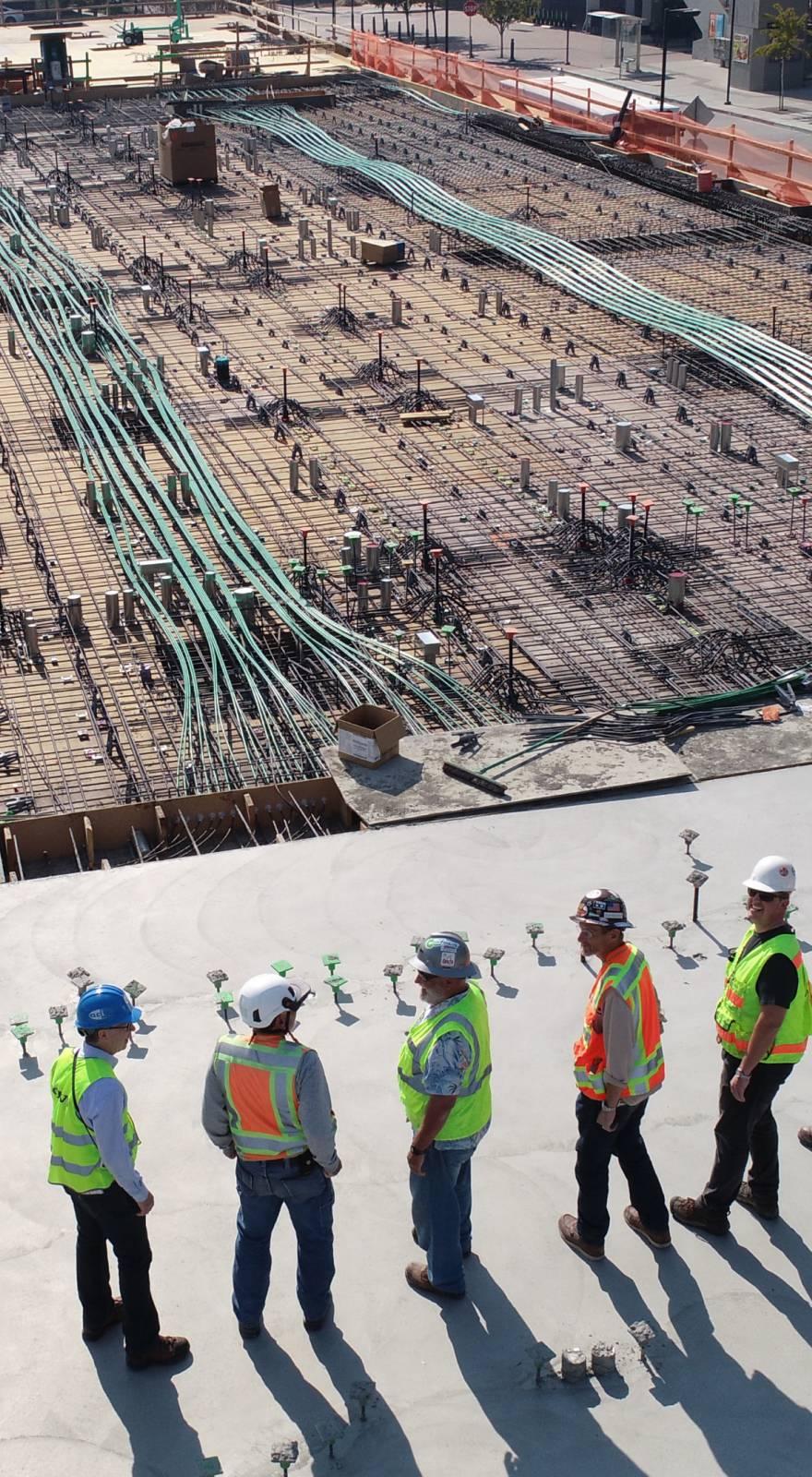Knowde Enhanced TDS
Identification & Functionality
- Chemical Family
- Technologies
- Product Families
Features & Benefits
- Ready-to-Use Product Features
Applications & Uses
- Markets
- Compatible Substrates & Surfaces
- Surface Preparation
- Surface preparation will vary according to the type of complete system to be applied.
- Apply Oil Stop Primer only to a clean surface that is sound and free of all dirt, dust, oil, grease, or foreign contaminants.
- Shot blasting tends to open oil-filled pores that will hinder the application process.
- The best method for cleaning an oil-soaked floor is best determined on the job location - solvents cleaning, steam cleaning, and water emulsion cleaners can all be considered.
- The floor must be dry before application.
- A test should be made to determine that the concrete is dry; this can be done by placing a 4"X4" plastic sheet on the substrate and taping down the edges.
- If after 24 hours, the substrate is still dry below the plastic sheet, then the substrate is dry enough to start coating.
- The plastic sheet testing is also a good method to determine if any hydrostatic pressure problems exist that may later cause disbonding.
- Product Mixing
- This product has a 1:1 mix ratio by volume.
- After the two parts are combined, mix well with slow-speed mixing equipment such as a jiffy mixer until streak-free.
- Improper mixing may result in product failure.
- Product Application
- We recommend due to the vastly varying contamination parameters, it is recommended that the applicator check both the adhesion of this product to the substrate as well as a thorough evaluation of the proposed intermediate and topcoat selections.
- Petroleum-based oils have a tendency to migrate upward through newly placed coatings and could cause disbonding if preceding coats are not inspected prior to top coating.
- Clean all previous coatings as necessary.
- This coating should not be used until a sample has been evaluated for suitability and adequate adhesion.
- Make certain that the floor and air temperatures are between 55°F and 90°F (15.5°C and 32.2°C).
- Preferably, the relative humidity should be below 90%.
- This product should be applied by roller or brush at 5 - 8 mil thickness when wet.
- Re-coat or Topcoating
- When the Oil Stop Primer is fully cured, proceed with the next specified coat.
- Allow sufficient time between all subsequent coatings.
- Remember that products will require additional time to cure in lower temperatures.
- Read the individual technical datasheets for each product before proceeding.
- If different topcoats are desired, contact your local representative for application details before proceeding.
- Floor Cleaning
- Some cleaners may affect the color of the floor installed.
- Test each cleaner in a small area, utilizing your cleaning technique.
- If no ill effects are noted, continue to clean with the product and process as tested.
- Restrictions
- Restrict use of the floor to light traffic and non-harsh chemicals until the coating is fully cured.
- It is best to let the floor remain dry for the full cure cycle.
Properties
- Color
- Component A
- Component B
- Technical Data
- Abrasion Resistance
Taber abraser CS-17 with 1,000 gram total load and 500 cycles = 37.0 mg loss
- Flexibility
No cracks on 1/8” mandrel
- Finish Coat
Satin gloss (40-60 @ 60°C, Erichsen glossmeter)
| Value | Units | Test Method / Conditions | |
| VOC (Per Gal.) | 2.5 | lbs. | - |
| Mix Ratio by Volume | 1.0 | - | - |
| Value | Units | Test Method / Conditions | |
| VOC (Per Gal.) | 2.75 | lbs. | - |
| Mix Ratio by Volume | 1.0 | - | - |
| Value | Units | Test Method / Conditions | |
| Clean Up | Use Xylol | - | - |
| Solids by Weight (Mixed) | 69.5 - 73.5 | % | - |
| Solids by Volume (Mixed) | 61 - 65 | % | - |
| Coverage Rate (Kit, 5 - 8 Mils Wet) | 200 - 320 | sq. ft. | - |
| Film Thickness (Per Coat Wet) | 5 - 8 | mils | - |
| Film Thickness (Dry) | 3 - 5 | mils | - |
| Viscosity (Mixed, Typical) | 150 - 300 | cps | - |
| Impact Resistance (Direct, Passed) | 50.0 | in. lb. | Gardner Impact |
| VOC | max. 310 | g/l | - |
Regulatory & Compliance
- Dot Classifications
- Part A “Flammable Liquid” N.O.S., 3, UN1993, PGIII”
- Part B “Flammable Liquid N.O.S., 3 UN1993, PGIII”
Safety & Health
- Precautions
- Use with adequate ventilation.
- Avoid contact with eyes, skin and clothing, wear gloves or protective creams - if skin contact occurs, wash at the first opportunity with soap and water.
- Eye exposure or inhalation can result in serious medical problems - in the event of eye contact, immediately flush eyes with water and contact a physician.
- Keep out of the reach of children.
- For industrial use only.
Packaging & Availability
- Packaging
Kits:
- 2-gal. or 10-gal.
Approx. Kit Weight, 2-gal. Kit Includes:
- 1-gal. Part A (10.05-lb)
- 1-gal. Part B (8.6-lb)
Storage & Handling
- Shelf Life
- 1 year

